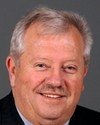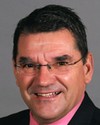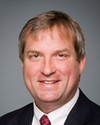Mr. Chairman, members of Parliament, thank you for inviting me to appear before the committee as part of your study on aircraft noise in the urban environment.
Accompanying me is Trevor Johnson, assistant vice-president of service delivery; and Larry Lachance, assistant vice-president of operational support.
As many of you know, Nav Canada is Canada's civil air navigation service provider. Our core business is providing air traffic control services to domestic and international flights within Canadian airspace and in delegated international airspace, including half of the North Atlantic, the busiest oceanic airspace in the world.
We operate the air traffic control towers at major airports, and at many smaller airports we operate flight service stations or community aerodrome radio stations.
We ourselves don't actually make a lot of noise; air traffic control is a pretty quiet operation. But we are cognizant of our role in noise management. As Transport Canada explained, the primary responsibility for aircraft noise management is with airports themselves.
We provide air traffic control services to aircraft in compliance with airport noise abatement procedures. These procedures, once developed by airports, and published, are as binding on air traffic controllers as they are on pilots. Violations of noise abatement procedures can be subject to enforcement fines by Transport Canada.
Noise abatement procedures are unique to each airport, but they can and do include things such as specified departure and arrival procedures, preferential runway determination, altitude restrictions, and night restrictions.
Noise abatement rules are limited, in most cases, to the 10 nautical miles around an airport. That is appropriate, in our view, as it is within this zone that higher noise levels from aircraft operations occur. Outside of 10 nautical miles, which is approximately 19 kilometres, it is not that aircraft can't be seen and heard but that there is not generally a noise level that would impact residents' quality of life.
Most major airports have active community noise management committees on which our local management serve as members. Our primary role on these committees is a technical one, sharing data and advising on any potential safety or efficiency impacts of noise management options.
Much has been made of changes that Nav Canada implemented to aircraft routings in the Vancouver area three years ago, so I'd like to address that issue up front.
What we changed in the Vancouver area were terminal manoeuvring routes at higher altitudes. This was done to make the airspace function more efficiently and to address growth in air traffic that had occurred at numerous airports in the area.
Our changes are saving airlines $20 million annually in fuel, and they are reducing greenhouse gas emissions by an associated 79,000 metric tonnes per year. They have reduced delays, the need for airborne holds during busy periods, and they have improved on what had been a complex and sometimes confusing terminal area with overlying routes into and out of area airports.
Quite frankly, I will admit that the noise complaints that followed the implementation of those changes took us by surprise. In the past when we have made these types of changes, we never got any complaints. However, once they began, we quickly initiated a review of the routes. We met with residents, municipalities, and members of Parliament as part of this review. We investigated complaints, examined the issues, conducted measurements to assess noise levels in the communities where the complaints were coming from, and, most importantly, we made adjustments to routes in response.
Recent noise measurements taken by the airport at various locations in Surrey show that aircraft noise is not a significant contributor to the overall noise environment in the community. In South Surrey, for example, over 49 days this spring, only 12 aircraft that were arriving or departing Vancouver exceeded an established threshold, which was set at 60 decibels for 10 seconds. During that same period, there were over 3,000 non-aircraft community sources that exceeded that threshold.
There are things that can be done in some instances to design air routes that are sensitive to the community. There are sometimes options to place routes over more industrial areas, or over water, where the impact on a community is lessened. But in many cases, Nav Canada cannot make aircraft noise disappear; we can only relocate it.
The complexities of air traffic make it impossible to meet every neighbourhood's desire to be free of aircraft noise. While our employees are called controllers, there is much we don't control. This is a shared jurisdiction and a shared problem, with significant limitations and no easy solutions. So we must work with our partners to be good neighbours in the communities we serve.
It is now Nav Canada corporate policy that we will consult with communities when routing changes are proposed within terminal air space that would have a material impact on noise exposure in the community.
With that, Mr. Chairman, I would be pleased to take members' questions.














